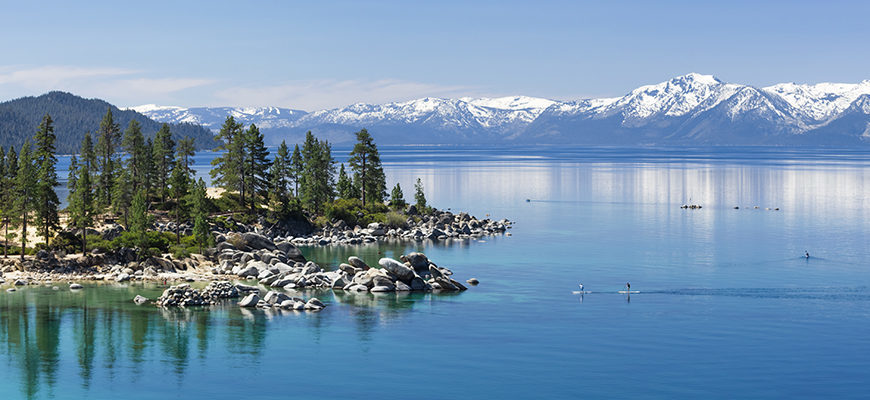
© Epoque
One of the best things about the Younger Dryas Impact Hypothesis is finding catastrophic features that may date to the event, but have not yet been directly connected with it. Today I submit one of the finest examples: The Great Lake Tahoe Comet Tsunami.
Its is a
well-published and
uncontroversial fact that in the recent prehistoric past a gargantuan rock shelf on the western shore of Lake Tahoe collapsed. FIVE SQUARE MILES of rock and sediment slipped into the gin-clear waters of the deep alpine lake and vomited a 300′ high tsunami wave that raced across the lake in five minutes, crashed on the eastern shore, ran up a 1000 feet high, and retreated leaving scars on the landscape visible today. The oscillating "seiche waves," rocked back and forth and in and out of the lake for half an hour of lacustrine hell.
Lake Tahoe was a bad place on a bad day.
When was the bad day? As determined in the most recent detailed study by James Moore
et al. (2014) link below,
the youngest estimate for the catastrophic event is our favorite geological and cultural milestone of 12,000 years ago, and the outer limit is 21,000. This range is supported by two sets of data. The older limit is defined by dating a
glacial moraine no older than 21,000 years, which was breached by the debris flow. (If it happened today, and was studied thousands of years in the future, it would also be constrained by this early date).
But the younger date — our ever present buddy, 12,000 years before present — both constrains the youngest possible timing of the event, and indicates to me it actually occured at that time itself. Moore
et al. determined the none of the accumulated lake sediments draped over the catastrophic debris are older than 12,000 years. If sediments above the catastrophic layer are no older than 12,000 years, and the outside date based on the moraine breech is 21,000 thousand years — what the hell happened to the nine thousand years of intervening sediment accumulation?
The answer is the sediment did not accumulate because the young-side bracket itself is the actual timing of the event. The same dating dynamic is underway with the Hiawatha Crater. Both events actually happened at their youngest possible date, because both events left nothing older above them.Just in case it is not immediately apparent, the collapse, and subsequent wake in the lake, were triggered indirectly YD impact(s) and the earthquake(s) that clearly rocked the planet in the immediate aftermath of the impact(s) elsewhere on the planet. Note that in the two million year history of Lake Tahoe, mp other "regular" earthquakes in the seismically active area had managed to dislodge the rock shelf, and no predecessor debris field appears on the lake bottom from a similar event. What happened that day was a uniquely powerful shock in the Quaternary.
And a very bad day.
Reference: Tsunami-generated sediment wave channels at Lake Tahoe, California-Nevada, USA

BUT, despite the crazy events I've been through, that would have been a sh*tty day to be there! Ouch!